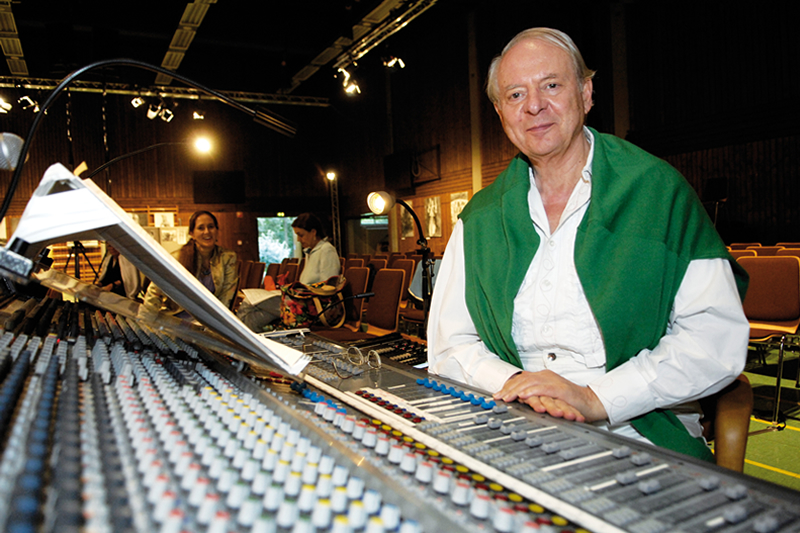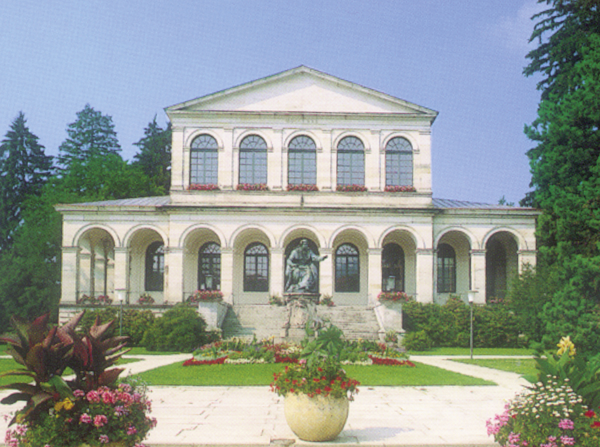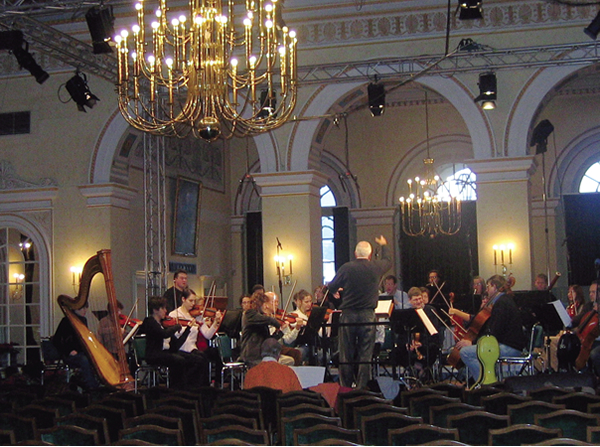
Instrumentation Works for Orchestra
Stockhausen Complete Edition on CD
Since 1991, a complete edition of all recordings in which Karlheinz Stockhausen has personally participated is being released on compact discs. Each CD in this series is identified by Stockhausen's signature followed by an encircled number. The numbers indicate the general historical order of the works.
Stockhausen realised the electronic music and participated in these recordings as conductor, performer, sound projectionist, and musical director. He personally mixed down the recordings, mastered them for CDs, wrote the texts and drew the covers.
- The compact discs may be obtained from the Stockhausen-Verlag: Kettenberg 15, 51515 Kuerten, Germany (www.stockhausenCDs.com).
Karlheinz Stockhausen
Instrumentation Works for Orchestra
FIVE STAR SIGNS
Introduction
FIVE STAR SIGNS
for Orchestra
It was composed in 2004, commissioned by the Bavarian Chamber Orchestra (Bad Brückenau) on the occasion of its 25th anniversary. Ulf Klausenitzer conducted the world première on November 28th 2004 at the King Ludwig I hall of the national spa.
The instrumentation is:
flute (also piccolo), oboe, clarinet, bassoon,
horn, trumpet, trombone,
harp, a percussionist,
1st violins (for example 4), 2nd violins (for example 4),
violas (for example 3), violoncelli (for example 2).
In the hope that an increasing number of orchestra musicians want to demonstrate
their personal talent, I have written these special STAR SIGNS.
Karlheinz Stockhausen in July 2004
Performance practice
For the world première, the conductor chose six 1st violins, five 2nd violins, four violas, three violoncelli. But since the hall was extremely resonant, it was difficult to hear the winds, especially the individual notes which should be clearly heard above the rest. The manner of playing – which stems from traditional performance practice – of always making a diminuendo at the ends of notes and especially at the end of a melodic phrase should be avoided by all means. That is why crescendi in brackets have been notated in many places.

King Ludwig I hall of the national spa.

Dress rehearsal before the world première of FIVE STAR SIGNS on November 28th 2004 at the King Ludwig I hall, Bad Brückenau. Stockhausen in the first row. (Photo: Kathinka Pasveer)
Fragments of melodies should always directly follow one another in succession and lead into one another.  and
and  should never be shortend or played staccato unless it is explicitly prescribed by a dot above the note.
should never be shortend or played staccato unless it is explicitly prescribed by a dot above the note.
The metronome tempi are very important for the character of the star sign and must be precisely played.
The percussionist plays a glockenspiel and a vibraphone. It is important to choose a glockenspiel which has a brilliant sound and a long decay. The mallets for the vibraphone are chosen together with the conductor. Every beat should be clearly heard, i.e. mallets which are on the hard side should be chosen rather than ones which are too soft. In SCORPIO however, the mallets chosen should only be just hard enough to allow the harp to be clearly heard.
The harp should, if possible, be amplified. He or she needs 2 plectra.
Notation
An accidental  or
or  applies to the one note it precedes;
applies to the one note it precedes;  serve as aids to reading.
serve as aids to reading.
All pitches sound as notated. The parts for clarinet in B-flat and horn in F are transposed.
The trumpet needs a wawa mute W , a cup mute C.
W  indicates that the
indicates that the
wawa mute is nearly closed with the hand,
 indicates that it is opened in steps, and
indicates that it is opened in steps, and
 is completely open.
is completely open.
( ) = half-valve.
The trombone also needs a wawa mute W.
 = remove mute.
= remove mute.
 = The attack of an accent should only briefly be one degree louder than the
= The attack of an accent should only briefly be one degree louder than the
dynamic notated
 = staccato is always short, regardless of the note value above or below
= staccato is always short, regardless of the note value above or below
which it stands. Notes without staccato should never be shortened.
 = caesura within the notated duration.
= caesura within the notated duration.
 = caesura added to the measured time.
= caesura added to the measured time.
accel. = speed up to about double tempo.
rit. = slow down to about half tempo.
molto rit. = slow down even more (for example to quarter tempo).